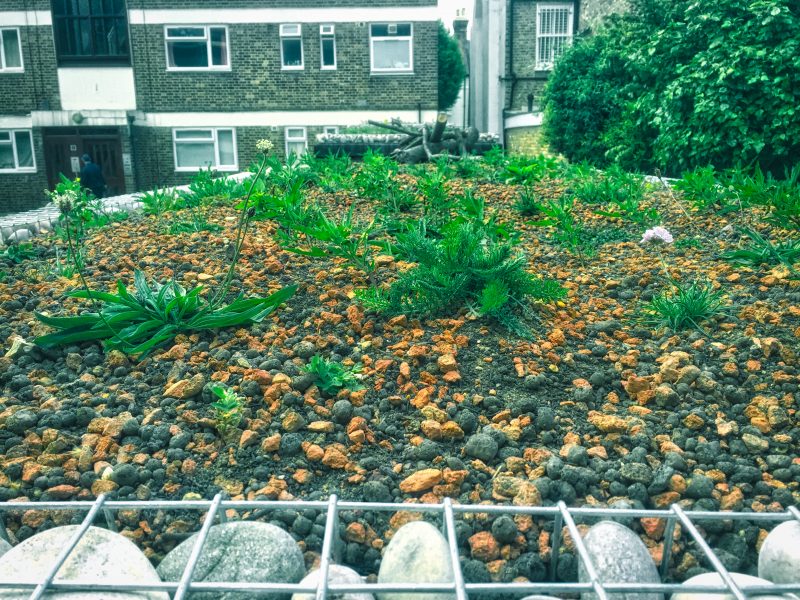Retrofitted green infrastructure in the Urban realm
Green features retrofitted into housing estates can have a real impact. It is essentially to work closely with the communities in question. This weeks featured video not only shows the benefits to the environment but also to the people living in the neighbourhoods.
Retrofitted rain gardens and small green roofs
Whilst climate proofing was a key driver for the project, it was important to ensure that the housing estates were improved both from a visual and an amenity point of view. Whilst managing stormwater may well be a significant driver in our cities, other elements need also to be considered. The convention approach to storing water is to use plastic boxes under ground. All this does is store water.
Rain gardens and green roofs, in contrast, offer a broader range of benefits. Firstly there is the benefit to wildlife. Pollinators and other insects have increased as the rain gardens green roofs are planted with wildflowers. Secondly there is play – human play. With this in mind the designs of the rain gardens included informal play elements. This can be clearly seen in the video as the children take ownership of the features. Play should be an important part of the design of green infrastructure on housing estates.
The project was supported professionally by the Green Infrastructure Consultancy (GIC), who helped analysis and identify the potential interventions. GIC has worked on a range of similar schemes in Sussex and elsewhere in London in recent months. The company has been at the forefront in retrofitting green roofs on buildings in London. Since 2005, they have designed and helped implement some of London’s seminal green roofs for biodiversity.

Organic Green Roofs installed the small green roofs overlooked by tenants. The techniques used were devised by the Grass Roof Company and Green Roof Training Limited. One large green roof designed by the GIC and installed by Active ecology used a Bauder system.
